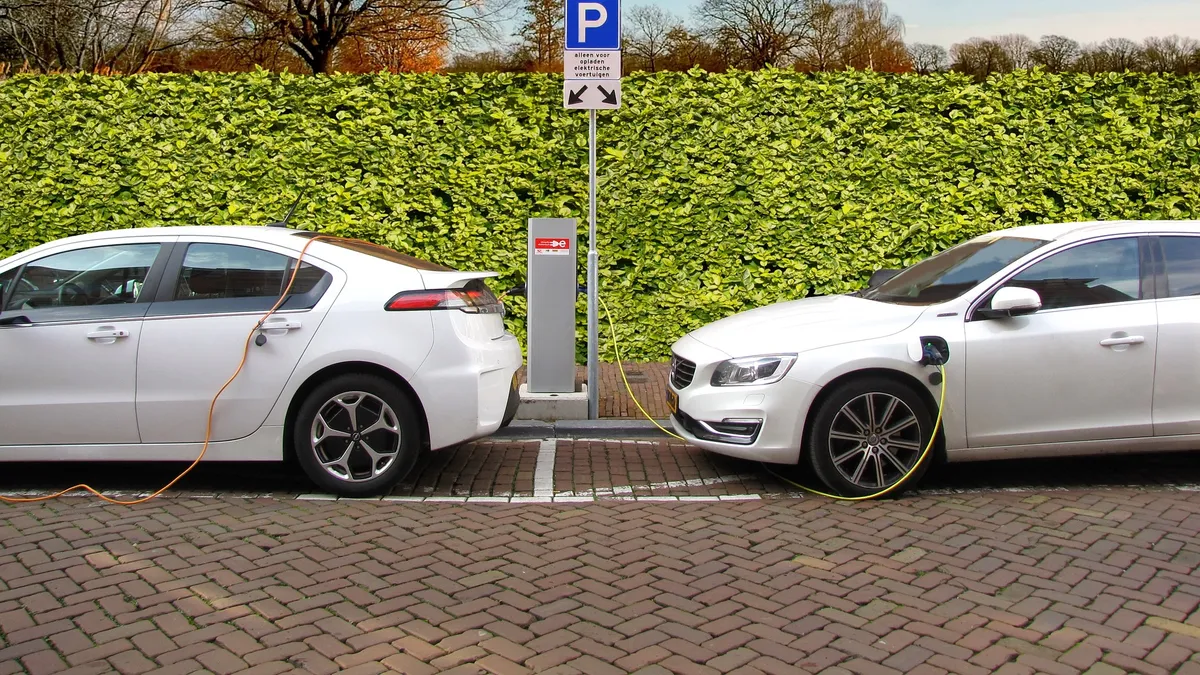Dive Brief:
-
The public-private Transportation Electrification Partnership (TEP), led by the Los Angeles Cleantech Incubator (LACI), wrote a $150 billion federal stimulus proposal to create jobs, reduce air pollution and build climate resilience in Los Angeles County and beyond, amid the novel coronavirus (COVID-19) pandemic.
-
The package calls for five key areas of investment:
| Investment Area | Proposed aid |
|---|---|
| Manufacturing, assembly and adoption of EVs | $25 billion |
| Zero emission infrastructure | $85 billion |
| Public transit & reduced vehicle miles traveled | $25 billion |
| Workforce development and training | $12.5 billion |
| Innovation ecosystem & related small businesses | $2.5 billion |
-
The proposal would "create opportunity nationally for the U.S. to be a leader on electric vehicle manufacturing, infrastructure deployment, job training and the cleantech innovation ecosystem," Matt Petersen, president and CEO of LACI and former chief sustainability officer of Los Angeles, told Smart Cities Dive.
Dive Insight:
Nationally, clean energy jobs have taken a significant hit from the pandemic, with 106,000 clean energy jobs eliminated in March. The layoffs follow the closure of hundreds of clean energy-related manufacturing plants for the production of EVs, building materials, solar panels and more.
Researchers have anticipated that the industry could lose up to 15% of its workforce or 500,000 jobs throughout the remainder of the pandemic, but the TEP proposal could represent a step back in the right direction for the industry and its workforce.
"We really feel strongly that in the next [federal stimulus] package, dollars should be put explicitly toward the cleantech innovation ecosystem, to the research and the startups working with that research, and to bringing products to market," Petersen said in a recent interview.
The proposal includes a call for a $10 billion investment in EV charging infrastructure for light duty vehicles. According to the proposal, 84,000 public and workplace chargers in LA County are needed by 2028 to support air pollution reduction and climate resilience. It suggests investing in initiatives like installing curbside charging infrastructure on streetlights for drivers who don’t have access to charging at home — an initiative the City of Los Angeles has already successfully put to use.
The Los Angeles area is also a "key gateway" for goods moving through the country, the proposal writes. Forty percent of all goods that enter the country travel through the Ports of Los Angeles and Long Beach, representing the largest source of air pollution in aggregate in the region. To tackle that level of pollution, the TEP calls for 60% of all medium-duty delivery trucks in Los Angeles County to be electric by 2028, and calls for 95,000 chargers to help support the zero emissions movement of goods.
The group also requests $11 billion for transit and school bus charging to support the state and area’s ambitious fleet electrification targets. The State of California has the goal to convert approximately all 12,000 transit buses in the state to be zero emission by 2040. And the LA County Metropolitan Transportation Authority, home to the second largest transit bus fleet in the country, plans to convert its fleet by 2030.
Job training is another critical component of the plan, with a $5 billion investment suggested for workforce development for veterans, formerly incarcerated, and the under/unemployed. It also requests $1 billion in workforce training for paid internships for emerging jobs like EV charging station maintenance and $5.5 billion for higher education institutions to give expedited certification programs for the under/unemployed to get back into the workforce.
Some of those suggested investments include $500 million in emergency loans and grants for cleantech startups that focus on solar, storage, or EV; $500 million in funding for startups owned by women and underrepresented people of color; and $1 billion for "shovel-ready pilots" that target low income communities disproportionately experiencing the effects of low air quality and a lack of first mile/last mile solutions through nonprofits.
The proposal could help set the stage for the United States as it works to catch up on the electrification of its public fleets. In December 2019, for example, the New York Metropolitan Transportation Authority (MTA), overseeing the country's largest public system, deployed its first all-electric articulated buses to help achieve a zero emission fleet by 2040. China, however, remains the global leader in electric bus fleets with the country anticipated to have 600,000 electric buses by 2025 — compared to the 5,000 in the U.S.
To keep up with all of our coverage on how the new coronavirus is impacting U.S. cities, visit our daily tracker.
















